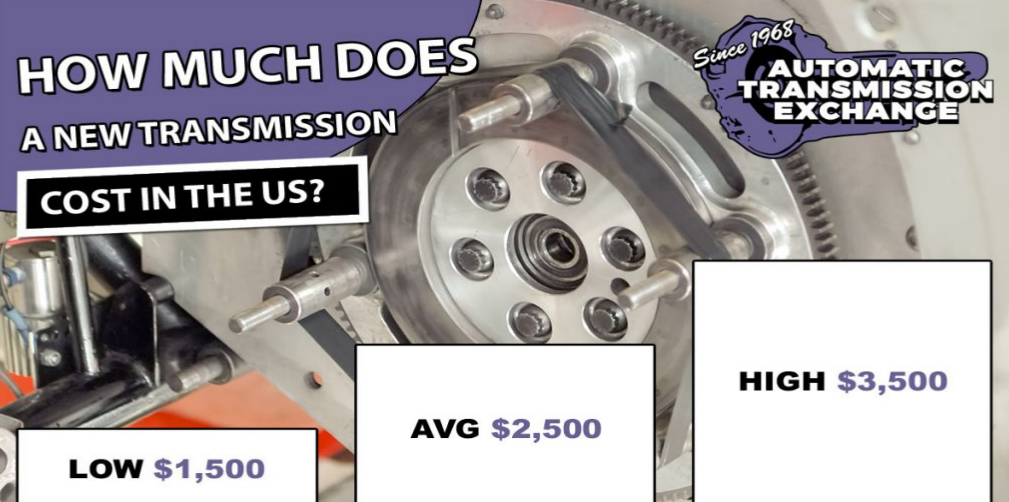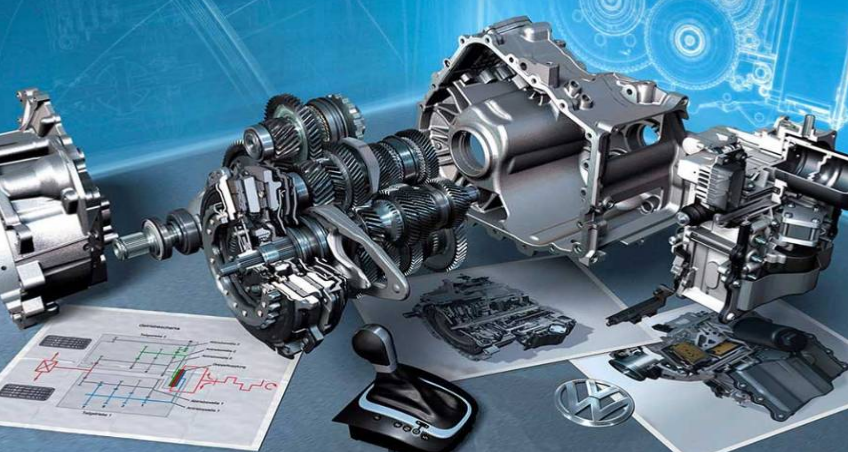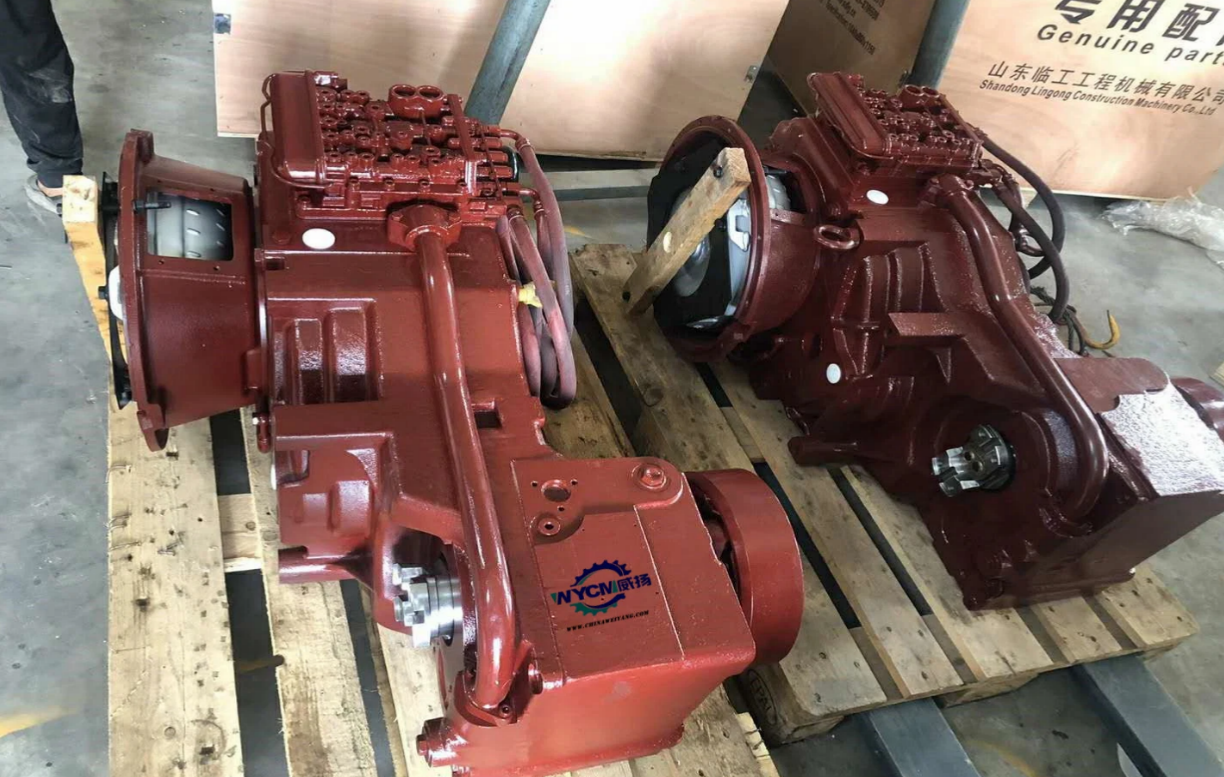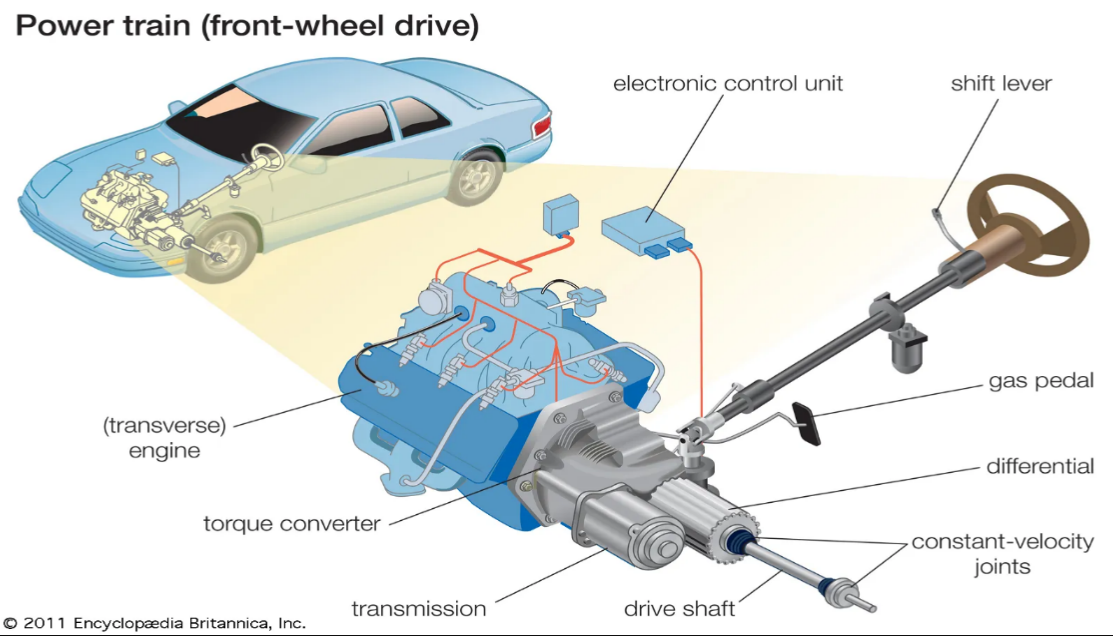The price for a transmission typically ranges from $1,500 to $4,000 depending on type and brand.
Types of Transmission Systems
When discussing vehicle mechanics, the transmission system is pivotal. This system plays a significant role in determining how power is transferred from the engine to the wheels, influencing overall vehicle performance, fuel efficiency, and driving experience. The market offers various types of transmission systems, each with its own set of benefits, drawbacks, and costs. Below, we delve into the prominent types and provide a brief pricing overview.

Manual Transmission
Often referred to as a “stick shift”, the manual transmission requires the driver to manually select and change gears using a clutch pedal and a shift lever.
- Overview: Manual transmissions give the driver full control over gear selection, often leading to a more engaged driving experience.
- Pricing Reference: On average, replacement for a manual transmission might cost between $1,500 to $3,000, depending on the make and model.
Automatic Transmission
The automatic transmission does the gear-shifting for the driver. It selects the appropriate gear based on the vehicle’s speed and the engine’s revolutions per minute (RPM).
- Overview: These are the most common transmission types in modern vehicles, known for their convenience, especially in stop-and-go traffic.
- Pricing Reference: Replacement costs typically range from $2,500 to $4,000.
Continuously Variable Transmission (CVT)
CVT doesn’t have gears in the traditional sense. Instead, it uses a system of belts or pulleys to produce an infinite range of gear ratios.
- Overview: CVTs offer smoother acceleration than traditional transmissions and can be more fuel-efficient.
- Pricing Reference: A CVT replacement might cost between $3,000 to $5,000.
Dual-Clutch Transmission (DCT)
A DCT blends elements from both manual and automatic transmissions. It uses two separate clutches for odd and even gear sets.
- Overview: DCTs can shift quicker than traditional manuals and automatics, providing a sporty driving experience.
- Pricing Reference: Typically, replacing a DCT can range from $3,500 to $6,000.

Tiptronic Transmission
Tiptronic is a type of automatic transmission but allows the driver to override the automatic mode by moving the shift lever into a second (Tiptronic) shift gate.
- Overview: Offers drivers the convenience of an automatic with the flexibility and control of a manual when desired.
- Pricing Reference: Replacement costs for Tiptronic systems usually sit between $2,800 to $5,000.
It’s worth noting that these are general price ranges and can vary based on several factors including brand, region, labor costs, and more. Always consult with a transmission specialist or mechanic for precise quotes.
Factors Influencing Transmission Prices
The cost of a transmission system isn’t just a random number thrown onto a sticker price. Multiple dynamic factors interact in determining the final price a consumer sees. By understanding these underlying factors, one can make more informed decisions and potentially get better deals on transmission purchases or replacements.
Production Costs
Every product starts its journey from raw materials. The costs associated with the acquisition of these raw materials, the manpower required, and the manufacturing processes play a significant role in determining the final price.
- Materials: Higher-grade metals or synthetic materials, which can offer increased durability and performance, often come at a higher cost.
- Labor: Labor-intensive manufacturing processes or the use of specialized workers can elevate costs. For instance, in regions where labor costs are high, manufacturing costs might subsequently be higher.
- Facilities: Modern manufacturing facilities that use state-of-the-art machinery and robotics can sometimes reduce costs but might also require significant investments.

Technological Advancements
The world of automotive engineering is dynamic, with new technologies emerging regularly. The incorporation of these advancements can influence transmission prices.
- Innovation: Advanced features like adaptive shift algorithms or energy-saving technologies can increase the cost of a transmission system.
- Research and Development (R&D): Companies often invest heavily in R&D to stay competitive. These costs can sometimes be passed on to the consumer.
Brand and Quality
The reputation and quality associated with certain brands can significantly influence transmission prices.
- Brand Prestige: Well-regarded brands that have built a reputation for quality and reliability might charge a premium for their products. Brands like ZF or Aisin, known for their high-quality transmissions, can sometimes command higher prices.
- Warranty and Service: Transmissions that come with longer or more comprehensive warranties might be more expensive initially, but they can provide long-term value and peace of mind.
Geographical Differences
Where you are in the world can greatly affect how much you pay for a transmission system.
- Import Fees: If a transmission system is not locally produced, import taxes, customs duties, and shipping costs can inflate its price.
- Local Demand and Supply: In regions where automatic transmissions are more popular, for instance, their prices might be more competitive, while manual transmissions could be pricier due to lower demand.
- Economic Factors: Exchange rates, local economies, and even socio-political scenarios can influence the prices of goods, including transmissions.
Understanding the interplay of these factors can equip a buyer with the knowledge to make better purchasing decisions and potentially negotiate better deals. It’s always beneficial to research and consult experts in the field when considering significant automotive expenses.

Transmission Maintenance and Repair Costs
Much like other vital components of a vehicle, a transmission system’s lifespan and performance significantly depend on regular maintenance and timely repairs. But, it’s not just about longevity. Proper care can lead to smoother rides, improved fuel efficiency, and can prevent more costly damages down the road. In this section, we explore the costs associated with transmission maintenance and common repairs.
Routine Maintenance
A transmission system, whether manual or automatic, requires periodic checks and maintenance to ensure it functions correctly.
- Fluid Changes: The transmission fluid is essential for lubricating gears and components. It typically needs to be replaced every 30,000 to 60,000 miles. The average cost for a transmission fluid change is between $80 to $250, depending on the vehicle and location.
- Filter Replacement: Especially for automatic transmissions, changing the filter is crucial. This typically costs between $100 to $200.
- System Checkups: An overall system checkup by a professional, which might involve checking for leaks, examining the fluid, and ensuring the system operates smoothly, can range from $50 to $150.
Common Repairs and Their Costs
Over time, parts wear out and may require repairs or replacements.
- Transmission Rebuild: Instead of entirely replacing a transmission, sometimes a rebuild is possible. This involves replacing worn-out parts within the transmission. Rebuild costs can range from $1,800 to $3,500.
- Solenoid Issues: The solenoid controls the flow of fluid throughout the transmission. Malfunctions here can lead to gear slippage or difficulty shifting. Fixing or replacing a solenoid typically costs between $300 to $850.
- Clutch Replacement (for manuals): The clutch in manual transmissions can wear out, especially in situations with a lot of stop-and-go traffic. A clutch replacement can cost anywhere from $500 to $2,500, based on the vehicle’s make and model.
Importance of Timely Maintenance
Neglecting transmission maintenance isn’t just about risking a breakdown. It’s about potential increased repair costs, reduced vehicle lifespan, and compromised safety.
- Prevention over Cure: Regular checkups can identify issues before they become severe. For example, a minor leak detected early could save hundreds in potential repairs.
- Fuel Efficiency: A well-maintained transmission can provide optimal fuel efficiency, leading to cost savings at the pump.
- Resale Value: Vehicles with well-maintained transmission systems tend to have a higher resale value. Potential buyers often check service records and are willing to pay a premium for well-maintained cars.
Comparative Analysis of Transmission Prices
The price of transmission systems isn’t uniform. Depending on multiple factors, from brand reputation to regional taxes, there’s a vast range of pricing structures that one can encounter. In this segment, we’ll dive deep into a comparative analysis of transmission prices by examining differences based on brand, region, and type of transmission. By understanding these distinctions, consumers can better navigate the market and make informed purchasing decisions.
By Brand and Model
Much like other vehicle components, transmission systems’ prices can vary wildly based on the brand and specific model of the vehicle.
- Luxury vs. Economy: Premium brands like Mercedes-Benz or BMW might have transmission systems that are pricier, possibly ranging from $3,500 to $7,000 for a replacement. In contrast, economy brands such as Toyota or Honda may offer transmission replacements for $2,500 to $4,500.
- Specialized Models: Performance or off-road models, like a Porsche 911 or a Jeep Wrangler, may have specialized transmission systems tailored to their unique needs. These can be priced higher due to their specialized nature.
- Availability: Brands that have a broad user base in a region might have more competitive prices due to the larger volume of parts available and higher competition among suppliers.
By Country/Region
Geography plays an essential role in determining the price of almost any product, and transmissions are no exception.
- Import Fees and Taxes: In countries where most vehicles or parts are imported, expect to pay more. Import duties, shipping costs, and other associated fees can increase the total cost.
- Labor Costs: In regions with higher labor costs, expect the installation and repair fees to be more substantial. For instance, transmission-related work might be pricier in Western Europe than in parts of Southeast Asia.
- Demand and Popularity: In areas where manual transmissions are more popular, like in parts of Europe, they might be priced more competitively than in regions where automatic transmissions dominate, such as in the US.
By Type of Transmission
Different types of transmission systems come with different price tags, primarily due to their construction, technology, and demand.
- Manual: Generally, manual transmissions are less complex and, therefore, might be less expensive. Replacements can range from $1,500 to $3,000.
- Automatic: The convenience and popularity of automatic transmissions might result in a price range of $2,500 to $4,000 for replacements.
- CVT: With their unique belt-based systems and increasing popularity for their smoothness and fuel efficiency, CVT systems can range from $3,000 to $5,000.
- DCT and Tiptronic: Being more specialized and offering a blend of manual and automatic features, these can range anywhere from $3,000 to $6,000.

Market Trends in Transmission Pricing
The automotive industry is ever-evolving, with innovations and global shifts impacting every component, including transmissions. As technology advances and consumer preferences change, so do market dynamics and pricing trends. Understanding these trends can provide insights into future pricing and the direction of the industry as a whole.
Shift Towards Automated Transmissions
The global move towards automation has also affected transmission choices. Automated transmissions, which include the traditional automatics as well as newer versions like CVTs and DCTs, are becoming the norm in many regions.
- Consumer Preference: The convenience offered by automated transmissions, especially in traffic-heavy urban environments, has led to increased demand. This higher demand has made these systems more affordable over time, with average pricing for automatic transmissions now ranging from $2,500 to $4,000.
- Fuel Efficiency and Performance: Modern automatics, CVTs, and DCTs often rival or even surpass manuals in terms of fuel efficiency and performance. As manufacturers invest more in these technologies, economies of scale can be expected to bring prices down further.
- Global Markets: In emerging markets, there’s a growing middle class with a preference for automatic vehicles, further pushing the shift away from manuals. This growing demand can lead to competitive pricing as manufacturers try to capture significant market shares.
Emergence of Electric Vehicles and Its Impact on Transmission
Electric Vehicles (EVs) represent a significant shift in the automotive industry, not just in propulsion but in the very concept of transmissions.
- Simpler Transmission Systems: Most EVs use simpler single-speed transmissions, eliminating the need for complex multi-gear systems. This simplification can lead to more competitive pricing, with EV transmission replacements ranging from $1,000 to $2,500.
- Increased EV Adoption: As more consumers gravitate towards EVs, driven by environmental concerns and governmental incentives, the demand for traditional transmissions might decrease. A lower demand for traditional systems might lead to increased prices due to reduced production scales.
- Innovation in EV Technology: As the EV industry evolves, there might be innovations in transmission technology tailored for electric propulsion. While initial innovations can be pricier, as adoption grows, prices may stabilize.
How to Get the Best Price for Transmission?
Every car owner understands the dread that comes with hefty repair bills, and transmission replacements can be among the priciest. However, with a bit of diligence, research, and negotiation skills, it’s possible to get a good deal on your transmission needs. This section is dedicated to helping you navigate the process and ensure you’re getting the most value for your money.
Tips for Negotiation
Whether you’re dealing with a local mechanic or a big auto service center, negotiation can lead to better deals.
- Research Average Prices: Before entering any negotiation, arm yourself with knowledge. Knowing the average cost of the transmission type you need in your area can give you a baseline to start the conversation.
- Get Multiple Quotes: Don’t settle for the first price you’re offered. Consult multiple service providers. This not only gives you a clearer picture of the market rate but can also offer leverage in negotiations.
- Highlight Loyalty: If you’re a returning customer or planning to use the same provider for future services, use that to your advantage. Service providers might offer discounts to retain loyal customers.
- Look for Promotions: Many service centers offer promotions, especially during off-peak seasons. Stay updated on these to get better deals.

Considering Refurbished or Used Transmissions
A brand-new transmission isn’t always necessary. Depending on your vehicle’s age, your budget, and your future plans, a refurbished or used transmission might be a suitable choice.
- Cost Efficiency: A refurbished or used transmission can cost significantly less than a brand new one. Savings can range from 30% to 70%.
- Quality Checks: Ensure that the used or refurbished transmission underwent rigorous testing and quality checks. Reputable dealers often provide certifications or guarantees of their product’s quality.
- Vehicle Age: If you’re driving an older vehicle that might not be with you much longer, a used transmission might be a more economical choice.
Warranty and Its Implications on Price
A warranty can provide peace of mind, but it can also impact the overall cost.
- Long-Term Savings: A transmission with a robust warranty might cost more upfront, but potential future repairs covered by the warranty can lead to long-term savings.
- Understand the Terms: Not all warranties are created equal. Some might only cover specific parts, while others might cover labor costs as well. Ensure you understand the nuances to avoid future surprises.
- Factor into Negotiations: When discussing prices, factor in the warranty’s value. A slightly pricier transmission with a comprehensive warranty might be more valuable in the long run than a cheaper one without any guarantee.
In conclusion, securing the best price for a transmission doesn’t rely on haggling skills alone. It’s about understanding the market, considering alternatives, and ensuring that the price you pay offers the best value not just now but in the long run. Always consult experts, read reviews, and educate yourself on your vehicle’s specific needs before making any decisions.
